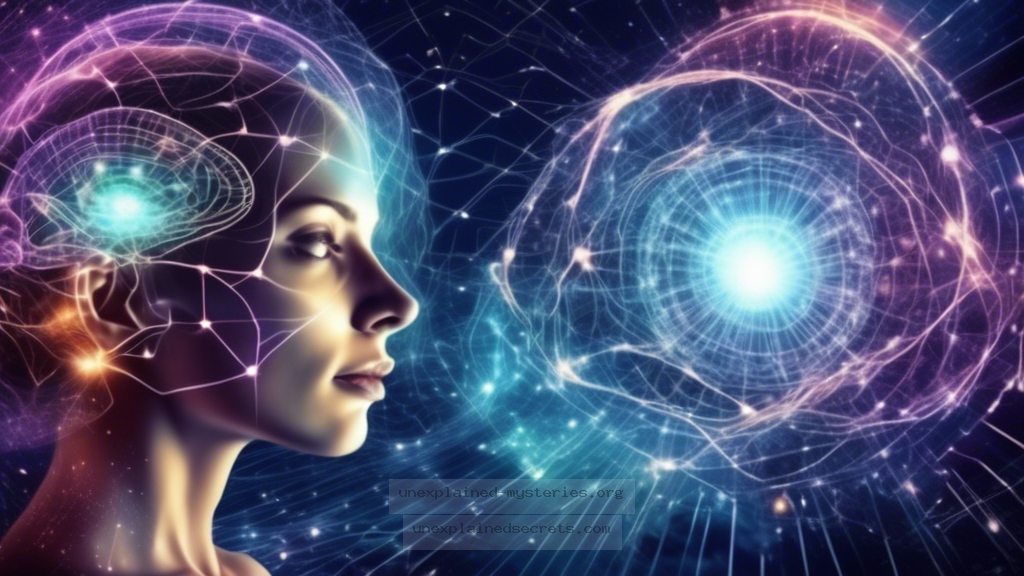Is There Scientific Evidence for Telepathy? Exploring the Enigmatic World of Psychic Connections
Is There Scientific Evidence for Telepathy? Exploring the Enigmatic World of Psychic Connections
Telepathy, the ability to transmit thoughts or feelings between individuals without the use of known human senses, has long captivated the imagination of scientists, researchers, and the general public alike. The question of whether telepathy is a real phenomenon or merely a product of folklore and fiction is a compelling one that has led to extensive research and debate. In this blog post, we will delve into the intriguing world of telepathy research, examining historical evidence, scientific studies, and the implications of psychic connections on our understanding of human consciousness.
The Historical Context of Telepathy Research
Telepathy has roots in various cultures and traditions, often intertwined with spirituality and mysticism. The term “telepathy” was coined in 1882 by the psychologist Frederic W. H. Myers, who believed in the possibility of communicating thoughts directly from one mind to another. Early experiments in telepathy were conducted by the Society for Psychical Research (SPR) in London, which aimed to investigate paranormal phenomena scientifically.
One of the most famous early studies involved the use of Zener cards—cards with symbols used to test psychic abilities. In the 1930s, psychologist J.B. Rhine conducted experiments at Duke University, claiming to have found statistical evidence for telepathy through card-guessing tests. However, his findings were met with skepticism and criticism, leading to ongoing debates in the scientific community.
Core Concepts and Theories of Telepathy
At the heart of telepathy research lies the concept of consciousness and its potential to extend beyond the physical body. Various theories have emerged to explain how telepathy might function, including:
- Quantum Entanglement: Some scientists propose that telepathy could be linked to quantum mechanics, where entangled particles remain connected regardless of distance. This theory suggests a non-locality aspect of consciousness.
- Collective Consciousness: The idea that all human minds are interconnected in a shared consciousness, allowing for the transfer of thoughts and feelings.
- Biological Mechanisms: Some researchers explore the potential for undiscovered biological systems that could enable telepathic communication, such as electromagnetic fields emitted by the brain.
Practical Implications and Evidence
Despite the skepticism surrounding telepathy, there have been numerous anecdotal accounts and some experimental results that suggest the phenomenon may have merit. Notable cases include:
- Identical Twins: Studies have noted instances of identical twins reporting simultaneous thoughts or feelings, leading researchers to consider whether a unique bond could facilitate a form of telepathy.
- Emergency Situations: Many individuals claim to experience a sudden sense of knowing when a loved one is in danger, suggesting a possible psychic connection.
- Laboratory Research: In a more controlled setting, studies at institutions like the University of California, Irvine, have sought to validate telepathy through various experimental designs, although results have varied.
| Study | Findings | Year |
|---|---|---|
| Rhine’s Zener Card Experiments | Statistically significant results supporting telepathy | 1930s |
| University of Edinburgh | Some evidence suggesting non-local communication | 2013 |
| Princeton Engineering Anomalies Research | Random event generators showing correlation with focused intention | 1979-2007 |
Alternative Perspectives on Telepathy
While many researchers are open to the possibility of telepathy, others remain staunch skeptics. Critics argue that the evidence for telepathy often relies on anecdotal accounts rather than rigorous scientific validation. They suggest that perceived telepathic experiences may be attributed to:
- Coincidence: Random occurrences can sometimes appear to be connected, leading individuals to believe in telepathy.
- Nonverbal Communication: Humans are highly adept at picking up subtle cues—body language, tone of voice—that might give the impression of telepathy.
- Confirmation Bias: Individuals may remember instances that confirm their beliefs about telepathy while disregarding those that do not.
Common Misconceptions about Telepathy
Telepathy is often clouded by misconceptions that can hinder genuine exploration of the subject. Some common misunderstandings include:
- Telepathy is Mind Reading: Many people conflate telepathy with mind reading, believing that one can access another’s thoughts entirely. In reality, telepathy may involve sharing emotions or images rather than raw thoughts.
- Telepathy is Always Accurate: Just because two individuals are connected does not guarantee perfect communication; misunderstandings can still occur.
- Only Special People Can Telepathically Communicate: While some may have heightened sensitivity, telepathy is thought to be a potential ability within every human being.
Best Practices for Investigating Telepathy
For those interested in exploring telepathy, whether through personal experience or scientific inquiry, there are several best practices to consider:
- Document Experiences: Keep a journal detailing any instances of perceived telepathy, including context and outcomes, to identify patterns over time.
- Engage in Mindfulness: Practices such as meditation can enhance awareness of one’s thoughts and feelings, potentially fostering greater sensitivity to telepathic connections.
- Participate in Controlled Studies: Joining research initiatives or experiments can provide a structured environment for investigating telepathy.
Future Developments in Telepathy Research
As technology advances and our understanding of the human brain grows, the future of telepathy research looks promising. Emerging fields such as neuroimaging and artificial intelligence may provide new tools to explore the depths of consciousness. Potential future developments include:
- Brain-Computer Interfaces (BCIs): BCIs are being developed to interpret and communicate brain activity, which could pave the way for a better understanding of telepathic connections.
- Interdisciplinary Research: Collaboration between neuroscientists, psychologists, and parapsychologists may yield innovative approaches to studying telepathy.
- Expanded Experiments: Continued testing with larger sample sizes and varied methodologies could help clarify the validity of telepathy.
Conclusion: The Enigmatic Nature of Telepathy
The exploration of telepathy remains one of the most fascinating and contentious areas of study within the realms of psychology and parapsychology. While the evidence for telepathy is not definitive, the numerous anecdotes and some experimental findings suggest that there may be more to human consciousness than we currently understand. As researchers continue to investigate this enigmatic phenomenon, the potential implications for our understanding of human connection, communication, and consciousness could be profound.
In conclusion, whether one views telepathy as a genuine phenomenon or a captivating mystery, it undoubtedly invites us to ponder the depths of human experience and the nature of our connections with one another. As science progresses, the truth behind telepathy may yet be uncovered, bringing us closer to understanding the intricate web of consciousness that binds us all.
Other Articles
Recent Posts
- What Happened to Flight MH370? The Conspiracy Theories That Still Haunt Us
- What Secrets Lurk Within the Walls of the Infamous Trans-Allegheny Lunatic Asylum?
- What Evidence Supports the Existence of Bigfoot in the Pacific Northwest?
- What Happened to the Indus Valley Civilization? Unraveling the Mysteries of Ancient Urban Life
- Can Telepathy Be Scientifically Proven Through Laboratory Evidence?







